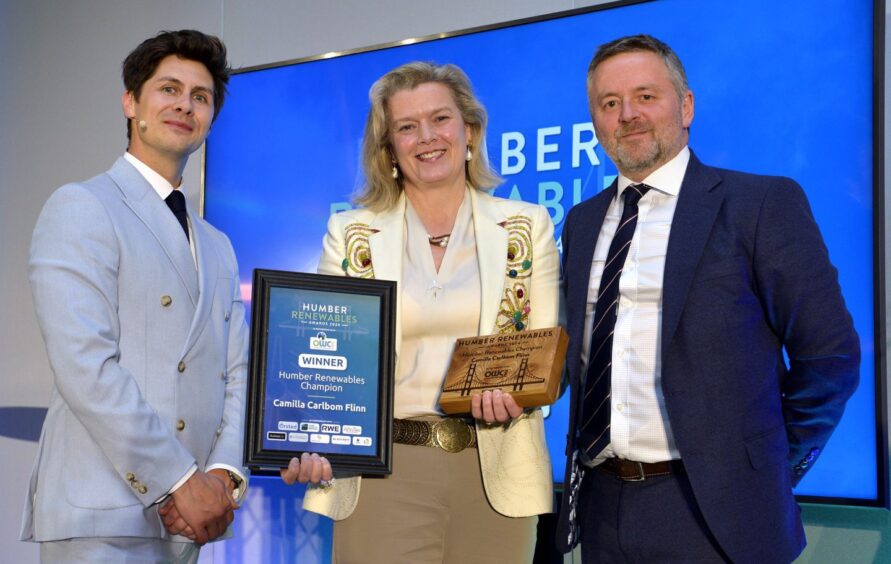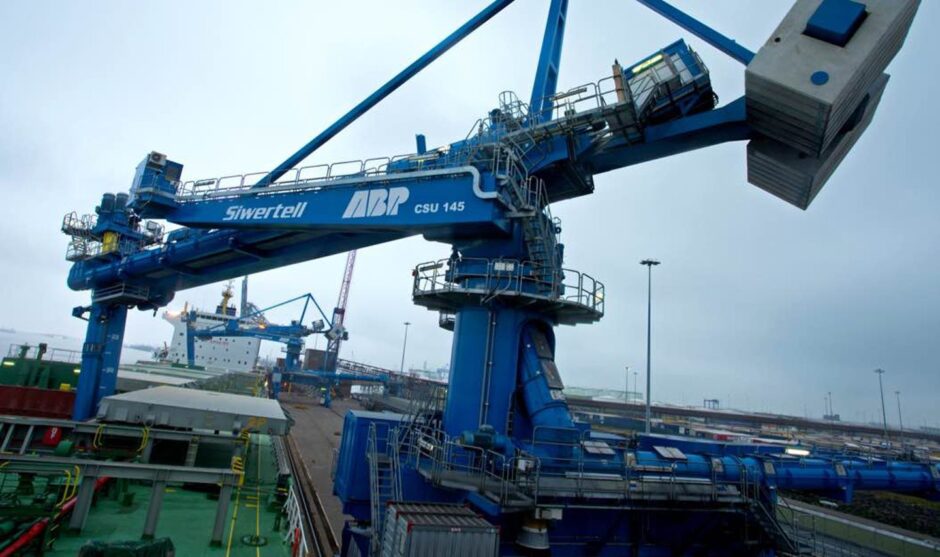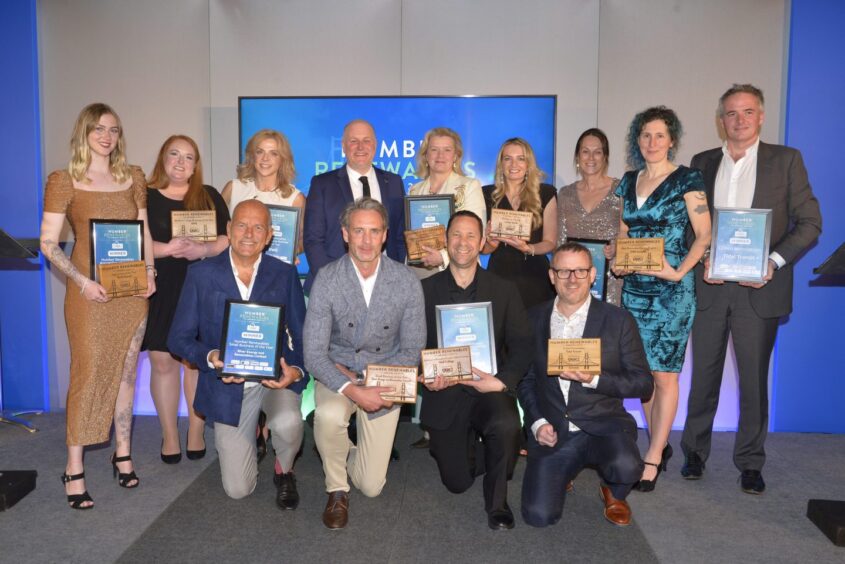
The Humber Renewables Awards 2025 are open for entries, and with a month to go until nominations close, we caught up with the reigning Humber Renewables Champion.
Born into a maritime family with great heritage on the Humber, Camilla Carlbom Flinn’s rise to prominence in the sector came at a time of incredible transformation.
For while the energy transition has played out from the corridors of power to homes and industry, no clearer a picture has emerged than on the Energy Estuary itself.
Immingham Dock, built principally to export coal, was walked across during its construction by her great grandfather as excavations completed on the 45-acre enclosure back in 1912, ahead of his eponymous ship’s agency handling the very first vessel to enter the lock.
Less than a century later, the port was being repurposed to import the fossil fuel at scale, as power stations needed coal to keep the country’s lights on, while mines of Yorkshire and Nottinghamshire closed. As the nation was weaned off the black stuff, renewables brought evolution across both banks.
Carlbom Shipping – now Pentagon Marine, following its acquisition in 2022 – fulfils a critical role for those vessels chartered to help build the world’s leading wind farms, and has recently added the world’s largest jack-up vessel to a proud list.
Instrumental to that change has been Camilla. Born in Cleethorpes, school holidays were punctuated with regular visits to the Immingham office, before she headed off to study international business management and broadcast journalism.
An early media career took her to Paris, London and New York before returning to Lincolnshire with her young family in 2008. Her father Anthony’s sudden passing saw her take the helm of Carlbom Shipping as a new industry dawned, a move that was always in the making, but happened without warning.
“I was always involved in the business from my teenage years, I’d always been around the office, I’d met clients and accompanied my father to business lunches and dinners,” she says.
“Before I even came back to the Humber, I knew the team in the office very well, and quite a lot of the clients, but I only came back 17 years ago when my father passed away.”
Industrial legacy
Carlbom had been founded in 1897 in Grimsby, expanding to Hull and then Immingham when the port was created. A proud history with enviable achievements throughout, Camilla says: “We handled the very first vessel to enter Immingham Dock, the SS Max, and it is wonderful that we are still here, alongside some of the same family companies still working on the river.
“That’s the lifeblood, the small, long-established companies with wonderful relations on the Humber. We have all grown in different ways. It is the basis of the maritime network that has also become the renewables network on the Humber.”
Those first tentative steps into offshore wind have blossomed, and under Pentagon the business is now working from Aberdeen to Lowestoft, and thriving on the Humber, where so much has played out.
“We’ve been very much involved in the construction of all the major wind farms off the East Coast in the last decade, so too operations and maintenance in Grimsby.
“We’ve found a need for the traditional element of being a ship’s agent, but this has expanded to encompass warehousing, transport, customs, procurement – it really is a massive logistical enterprise to support the offshore wind network.
“That has been fantastic for so many companies around the Humber and beyond. You can see the investment it has brought, you see it in Grimsby, you see it in Hull and you see it in Immingham. The ports are busy, particularly when it comes to the construction phase. The scale of vessel movements is just incredible for the area.”
The long-standing team and its independence made the transition a simpler one than it may have been for others. “We could be very agile,” Camilla says. “We could respond really quickly, and if we had an unusual request we could just get on and sort it, and that’s engrained in our service levels to our customers. Whatever they need, even if they might not know they need it, we have the knowledge and experience to deliver.
“There are so many aspects of offshore wind, particularly in construction. It has been a sea-change in how we operate and the services we offer, and this transformation was essential, with all the coal-fired power stations being forced to close. It has been vital for the maritime sector.”
Reigning champion
Her crowning as Humber Renewables Champion was as much about her work outside of the agency as within.
Camilla is a leading light in Humber Marine & Renewables, and, continuing another family role, is honorary consul for Sweden and Finland, while also sitting as chair of the Humber chapter of the Swedish Chamber of Commerce, and a member of the Swedish Council in London, actively promoting business and cultural connections across the North Sea.
She first became involved with the Humber Marine & Renewables, formed with the merger of Team Humber Marine Alliance and Grimsby Renewables Partnership, in 2010.
“I remember my first international trip to Denmark in 2010, taking in Esbjerg, looking at a Siemens blade factory over there. Now it is incredible to fast forward 15 years and we are doing that on the Humber, showcasing how to operate in offshore wind to the rest of the world.
“We have had visitors from China, South Korea, Taiwan and the US, as well as Europeans. We are now the posterchild for offshore wind – particularly in how you can use the assets of old fishing industries that have lost some of their power, and utilise the infrastructure the skills and talent, and just apply it into offshore wind. It is an incredible achievement.”
And while now a senior figure on the board, she credits the organisation for supporting such growth.
“For a small business to set foot in the offshore sector, Team Humber just opened so many doors,” she says.
“You don’t meet people by cold calling, but at events Team Humber put on, and it is fun. You meet interesting people, learn about their business, find common ground, and when you need a service or a sub-contractor you have that network.
“We have done a lot of work for some major players in the sector, and on the Hornsea Two project (the latest project completed by Orsted on the Humber) we had 125 sub-contractors.
“A lot of that supply chain was local, and it included hotels, taxi firms, bus companies catering, security, cleaning services – it is not just about vessels, it is machinery, repairs, bunkering, stevedores and the list goes well beyond maritime. That’s what offshore wind brought to the community.”
Twinned with her journalistic training and experience, she has found incredible advantage in the trade organisation.
“It has always brought great benefit to business, and the people involved have always been so welcoming, and it is nice to give back,” she says.
“We are all voluntary directors, but what you give you get back, you get pushed out of your comfort zone, but why not? The more businesses we can support, the better it is for the region.
“We should be shouting about what we can do on the Humber, we’re at the forefront of offshore wind, hydrogen, decarbonisation and – for being the highest CO2 emissions area in the UK – we’re also going to be leading the way with carbon capture.
“The investment into that side of the industrial decarbonisation plan is huge and kudos to the big players who are making it happen. We all have a responsibility, but it takes leadership, and the Humber is one of the leading areas.”
Humber Renewables Awards
Camilla quite rightly, was recognised for her leading role too, but she modestly deflects the spotlight on to the emerging talent and innovation that the Humber Renewables Awards champion.
Referencing the Clean Maritime Demonstration Competition, with Hull’s MMS involved in GT Wing’s new propulsion technology, Tidal Transit fitting electric engines to crew transfer vessels and the first charging points proposed at offshore farms, she says: “All will be normal in a decade’s time, but they are starting here.
“That’s the joy of the Humber Renewables Awards; you find out about all these amazing innovations, and what they are doing, be it projects, community involvement or skills. A lot of it is at grass-roots level, and some is led by the big corporates, while offering game-changing experiences to our educational sector. It is amazing and all ties in, and it needs celebrating.
“There are so many amazing people that do so much, not just within their businesses but outside of that. It was a surprise to hear my name, and I was quite unprepared for it. I really was so honoured because I know what people do for their communities, and – particularly when you have been a judge – you know about so many different companies and different people, who you admire.
“To then to be picked out and have that recognition was really touching. It is very special as there are some amazing people who have been Humber Renewables Champion in the past.
“It was wonderful, but then you have to double-up your efforts, make sure you earn the title until the honour passes on to the next recipient!”
 © Supplied by Associated British P
© Supplied by Associated British P © Supplied by Humber Marine & Rene
© Supplied by Humber Marine & Rene